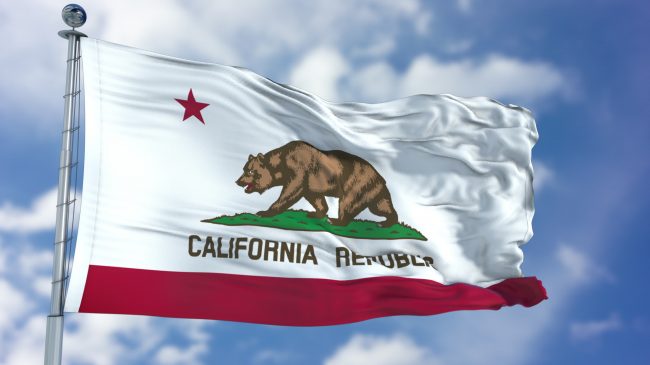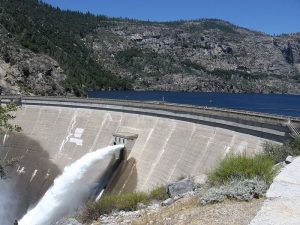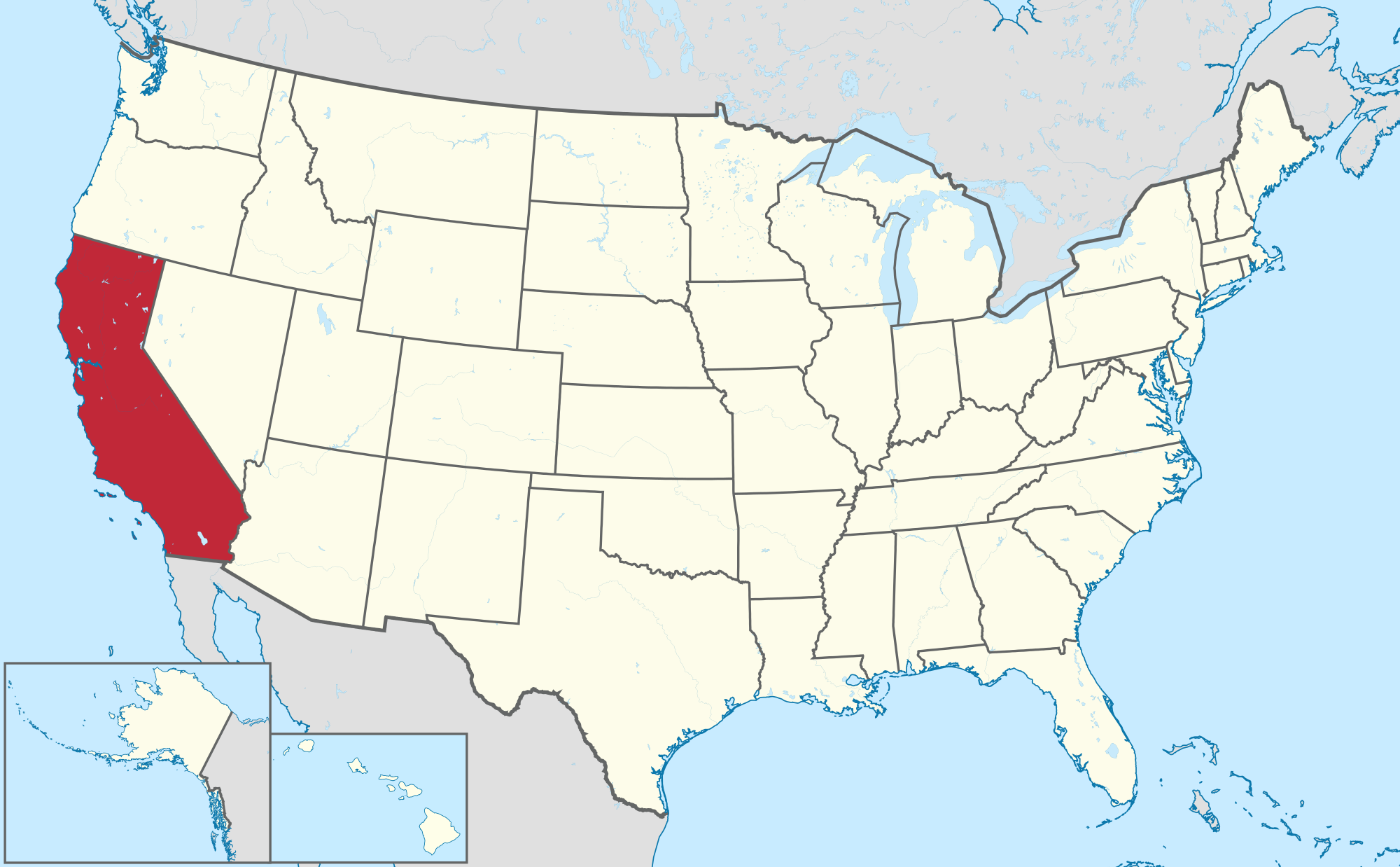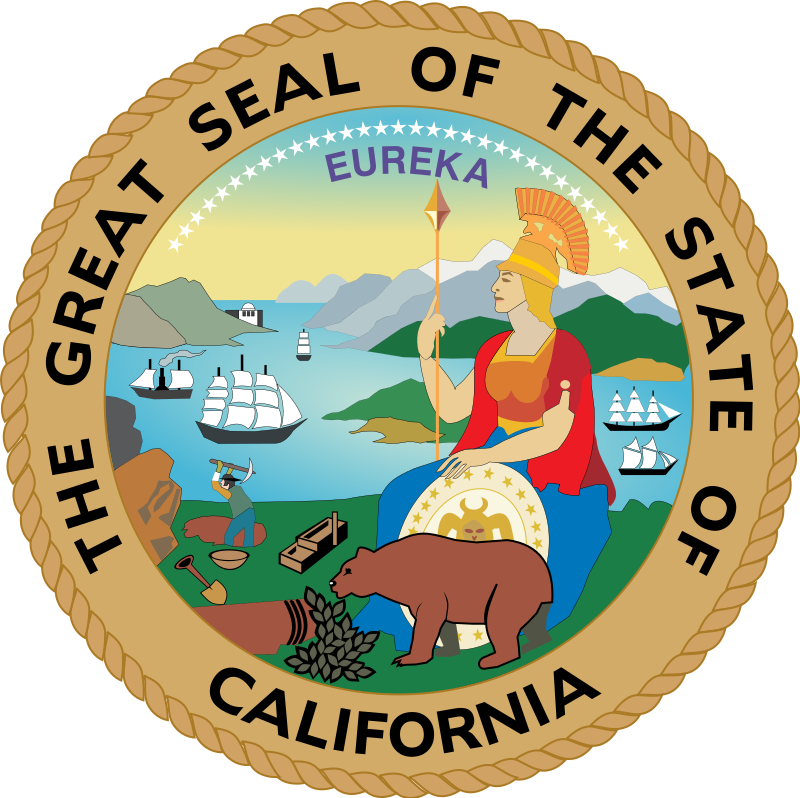
California Bear Flag. (Photo: ca.gov)
How to Realign California Politics
Failed policies are pushed by special interests that benefit from misery
By Edward Ring, September 25, 2020 2:07 am
The working class, which still constitutes a supermajority of California’s voters, is being destroyed by the policies enacted by the Democratic party. This is why political realignment in California can happen fast.
In three fundamental areas, public education, land use, and energy infrastructure, California’s current policies are destroying lives, livelihoods, and land. And in all three of these areas, the solutions that will work challenge core premises that California’s Democrats have relied on to claim the moral high ground. But these premises must be defied, because Democrats do not hold the moral high ground. They are ruining everything, from our cities to our forests. How can that be moral?
Dismantling the Public School Monopoly

The obvious example, where a realignment tipping point has already almost been reached, is the moral imperative to nurture the next generation. Everyone agrees: Teach the children well, that they might all have a chance at a bright future. But California’s public schools are failing their students, and the problem is the worst in low income neighborhoods where the importance of a good public education is the greatest.
The solution is equally obvious: Public schools need to experience competition. Parents need to be able to choose from an assortment of accredited K-12 schools; public, public charter, virtual, parochial, private, homeschool, and micro-schools.
To implement school choice, education advocates need to stop trying to push whatever baby step their consultants and donors claim is politically possible, and do what is right. They need to demand school vouchers that parents can redeem at whatever school they wish. Voters have had enough. They’re ready to vote for vouchers.
The biggest barrier to vouchers are the teachers’ unions, whose state and local chapters combined collect nearly a half-billion in dues each year. These unions use hefty portions of that money to buy politicians and lobbyists, impacting legislation that protects their monopolies.
But they are not doing this “for the children.” The do not hold the moral high ground. They oppose school choice because as a monopoly they can perpetually acquire more members, more dues, and more power. And the parallel moral dimension, at least for the leadership of these teachers’ unions, is they can use their control over the public schools to indoctrinate California’s children.
Dismantling the Density Delusion

If there is any area where years of indoctrination have turned ideologically driven opinions into supposed facts beyond dispute, it is in the area of environmentalism. And one of the most fundamental premises of environmentalism, often overlooked, is the delusion that higher density urban areas is necessary to protect the planet. The moral imperative is to save the earth, with “climate change” as the most urgent threat. But no matter what your opinion is about climate change, cramming California’s population into the footprint of existing cities will not have any impact whatsoever on the climate. All it will do is guarantee that housing is unaffordable forever.
If school vouchers is the revolutionary concept that will rescue K-12 education in California, more suburbs on open land is the revolutionary concept that will restore home affordability in California. Almost every premise of the “anti-sprawl” lobby is ridiculous and must be challenged. Single family homes of one or two stories are far less expensive per square foot than multi-story buildings. Building utility infrastructure for new suburbs is less expensive than tearing up streets and easements to retrofit utility conduits to accommodate higher density in cities.
The claim that expanding suburbs contributes to climate change is also ridiculous. Jobs will follow workers to new suburbs. People telecommute. Cars are becoming greener every year.
The idea that land is scarce is equally ridiculous. Using data drawn from 2017 USDA data, only 5.1 percent of California’s whopping 164,000 square mile area is given over to residential, commercial, and industrial use. California’s total urbanized land, 8,280 square miles, is insignificant compared to its 42,498 square miles of grassland, with about half of that used for cattle ranching and dryland farming. To develop a mere 20 percent of this grassland would allow California’s urban footprint to double.
The array of legislation and executive orders designed to prevent new suburban development in California is overwhelming. These laws and executive orders must be overturned, possibly through a constitutional amendment put before voters in the form of a ballot initiative. There is no environmentally compelling reason to block development of new towns and suburbs along California’s major freeways, 101, I-5, and 99, especially if these developments are on rangeland which is of marginal agricultural value and of which only a fraction would be developed anyway.
Expressed as a percentage of California’s vast area, the amount of land necessary to unlock suburban development again on open space is trivial. If ten million Californians moved into homes on spacious quarter-acre lots, four per household, with an equal amount of space developed for new roads and commercial development, it would only consume 1,953 square miles – this would be a 24 percent expansion of California’s urban footprint, i.e., from 5.1 percent to 6.2 percent of all land in the state.
To deny this opportunity to make home ownership affordable to California’s hard working low and middle income residents is based on misanthropic, cruel lies. Allowing suburban development on open land is a moral choice. Until it is again permitted, housing in California will never be affordable.
Dismantling the Renewable Energy Delusion

California’s ruling elite has decided that its citizens will bear the brunt of being the bleeding edge of a global transition to “renewable” energy. But by forcing this advance via government decree, they risk impoverishing a generation merely to leave a legacy of obsolete technologies.
A perfect example is Governor Newsom’s recent decree that new gasoline powered cars cannot be sold in the state after 2035, a mere 14 years from today. What if technologies are found to make gasoline powered cars even cleaner? Or what about natural gas powered cars? What about cars like the Chevy Volt, an extraordinary engineering accomplishment that allows all-electric driving for short commutes, but also delivers 50 MPG in city or freeway driving when in gasoline mode? The Volt died an unwarranted death because California’s green despots did not consider it sufficiently green.
And if California’s energy future is to be exclusively electric, why isn’t nuclear power an option? Why is Diablo Canyon, which could run for several more decades, being decommissioned? Why is California suing the federal government to stop them from increasing the height of Shasta Dam, which would increase hydroelectric capacity?
The selective use of facts to promote “renewables” in California is epic. What sort of analysis has been done as to how much of California’s solar panels, wind turbines and batteries have to be imported? What about lithium and cobalt, imported from nations where the environmental abuse and labor conditions are hideously worse than anything in the U.S.? Why aren’t mining concerns allowed to exploit the abundant lithium deposits in California’s Mojave Desert?
Then there is the question of what happens to all these “renewable” installations when they degrade and have to be replaced. How long will these solar panels and batteries last, and how will they be reprocessed? Even if California achieves a 100 percent renewable electric energy infrastructure, how can it ever be scaled to be applied worldwide, given the raw materials required and the fact that today solar and wind only supply 3.8 percent of global energy? What about new technologies that may come along and render this massive sacrifice obsolete?
Californians deserve reliable and cheap energy. This means nuclear power, hydroelectric power, and clean natural gas. Doing this makes life affordable for working families, and also makes it easier for manufacturers to come back to California, bringing with them well paying jobs.
Destroy the Premises of Misery that Masquerade as Morality
Much more can be said about policies in California that harm people and the environment, but these three are foundational. If you fix the schools you reduce crime and enable upward mobility. If you deregulate so you can build new suburbs on open land you make housing affordable, reduce the overall cost-of-living, and reduce homelessness. If you back off these extreme renewable energy mandates you reduce the cost-of-living and stimulate economic growth.
The premises that must be challenged and destroyed, because they are utterly false, are the following:
(1) More money to feed the teachers union monopoly does not help children learn.
(2) Packing people within the footprint of existing cities does not help people or the environment.
(3) “Renewable” energy is not cheap or reliable, and it is not helping the environment.
The policies that must be promoted without reservations or apology, because they are moral choices that will make California livable again, are the following:
(1) School vouchers must be implemented, so parents can choose whatever school they want for their children.
(2) The regulatory barriers to suburban land development must be all but scrapped, so housing that people want will be affordable.
(3) Hydroelectric, natural gas, and nuclear power must be expanded in California, and renewables mandates must be reduced, so energy will be affordable and reliable.
California’s voters need to understand that these failed policies are pushed by special interests that benefit from misery. The teachers union has a monopoly on education, and the worse things get, the more money they demand. The major corporations, the investment banks, and the pension funds are all in a position to benefit from artificial scarcity of land, because it pumps up the value of their real estate portfolios. The tech giants and the public utilities love renewable energy, because it drives a much larger percentage of consumer spending into paying for overpriced electricity, along with creating a mandatory market for the “internet of things” to manage energy consumption.
Politicians that advocate for school vouchers, suburban expansion, and conventional energy will be viciously attacked by self-righteous zealots, backed up by self-serving billionaires. But the politicians with the courage to stick to this revolutionary agenda will win, because it serves the people instead of the bureaucracy and the billionaires.
- Ringside: Will Advocates for More Water Supply Projects Find Unity? - December 11, 2025
- Ringside: EVs and California’s Future Demand for Electricity - December 4, 2025
- Ringside: Politically Viable Water Supply Projects - November 27, 2025





Ed Ring for Governor!!!
Newsom must go!!!
You can save your children from the #GovernmentRunSchools with homeschooling, but to save the next generation and America, we need #SchoolChoice. Join the movement to put a #SchoolChoice initiative on the 2022 ballot. https://www.CaliforniaSchoolChoice.org/
The#SchoolChoice initiative will put every child’s share of state K-12 education spending into an educational savings account giving all parents the same choices that rich liberals like Gavin the First have for their children. Any money parents save can be used for college or vocational training. The money will follow the children.
“Your money, your children, your choice.”
Only when there is #SchoolChoice will all children and families be able to say:
“Free at last, free at last, thank God almighty [and #SchoolChoice], I’m free at last.”
Fully agree with this… whilst CA is increasingly polarised as more of the middle class leave, replaced by the rich (and pop. is still below 40 M, meanwhile ‘red’ states are growing much faster), and there is a strong ‘liberal’ base in our coastal cities, I think a good middle of the electorate are moderates.
Whilst they think Rs are backwards or dislike Trump, Newsom & co is turning CA into a poorer state, with artificial scarcities as you mention.
Ballot measures could be a good way to reign in the Dems, one on increasing water storage, better roads, affordable homes (more suburbs not $550,000 ‘affordable’ apartments for the homeless as is done now…), energy reliability and affordability etc… Maybe Republicans should vote for or run as moderate Dems to flush out ‘progressives’, or reform their platform in CA to appeal to moderate independents.
Obviously most Californians care about the environment but most want a decent quality of life, which Dems are systematically attacking. In WS voters rejected a poorly designed carbon tax + in CO voters also rejected a quasi-fracking ban (nearby settlements) so I don’t think blue states = rabid ‘progressives’, just wary centrists.
Of course when it comes to housing there is a strong NIMBY element, both density and suburban types, but aside from certain Bay Area Counties and Ventura County ballot measures that make suburban development tricky etc…, I don’t think there is big anti-housing opinion. SD County just voted against enacting one which is encouraging (although they scuppered a housing project unfortunately). A pro-housing measure that promises to make rents + home ownership affordable whilst conserving the best land (of course 100% possible) could prove popular with the mass of financially tight renters in LA and Bay Area Metros who aren’t wealthy NIMBY types.
Turning the Californian housing allocation targets (that puts too much onus on dense housing in existing cities) into a mandatory CEQA exempt process, that requires housing development be approved would be immensely helpful, in the U.K there is similar which has allowed more housing in the ‘greenbelt’, another older anti-sprawl, irrational policy driving up house prices. At the moment in CA these targets just mandate zoning, not actual shovels in the ground, and of course CEQA can hold lots of projects up.
And even with denser zoning and CEQA streamlining in cities, dense apartments will never solve the housing affordability problem with high land/labour costs, nor give middle class families the lifestyle they want.
Either way, I’m sure CA voters wouldn’t mind something voting for something different if you could have effective leadership and campaign to demonstrate Dems failing policies on water provision, poor roads, energy reliability, the homeless, forest/scrubland management, cost of living etc…
I am quite bullish on solar/wind actually, but I agree resilient + affordable backup power is essential and it is lunacy to prevent Hydroelectric enhancements or support Nuclear. Newsom actually did the right thing preventing a second round of blackouts by temporarily abandoning enviro policies throttling gas plants, and extending the life of some SoCal gas plants until 2025 (they say…).
Unfortunately this also shielded CA residents from the reality of a rushed, bodged switch to renewables, as shown by the first blackouts.
The current situation in CA is a real shame and it would be nice if something could mediate this solution in the future. Republicans must be rational and chart a path to sanity given Californians characteristic. Voters may favour climate change action + usual Dem talking points, but not in an economy destroying, extreme way. Offer rational, moderate policies and Newsom and co and be throttled or shown the door!
(2) Packing people within the footprint of existing cities does not help people or the environment. SB 375 Anti-Sprawl law concentrates population near the coast where groundwater resources are slim or none. Dispersion of population to the inland areas would locate people closer to groundwater resources, lessening imported water demands and impacts on wildlife.
(3) “Renewable” energy is not cheap or reliable, and it is not helping the environment. The recent unplanned electric blackouts were caused by the expansion of solar power into nearby states resulting in no backup power to supply California during heat waves and cold snaps.